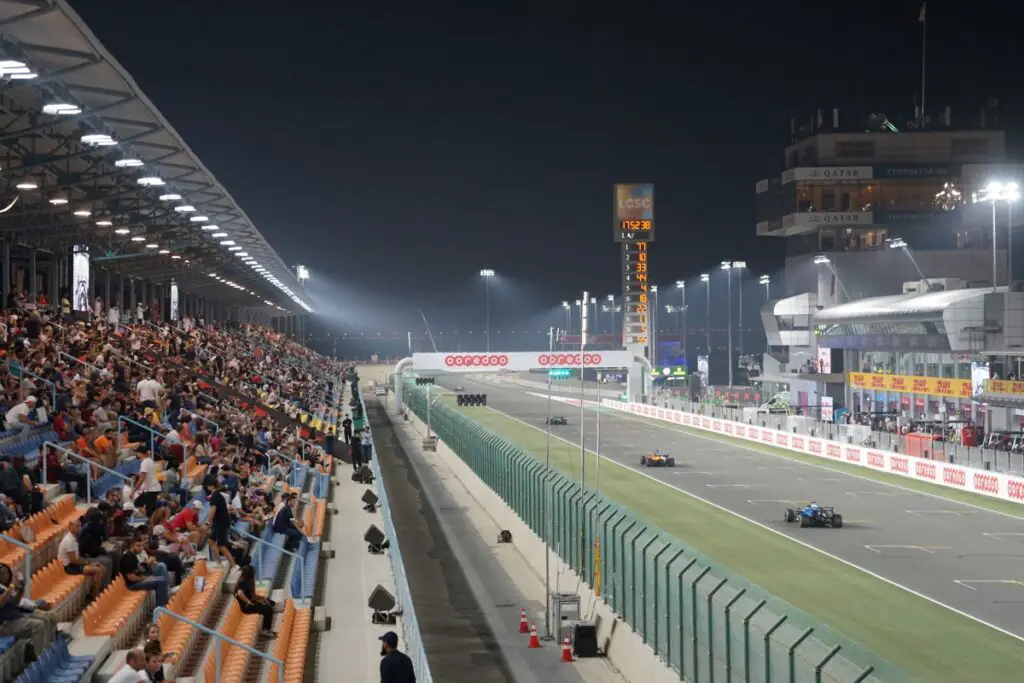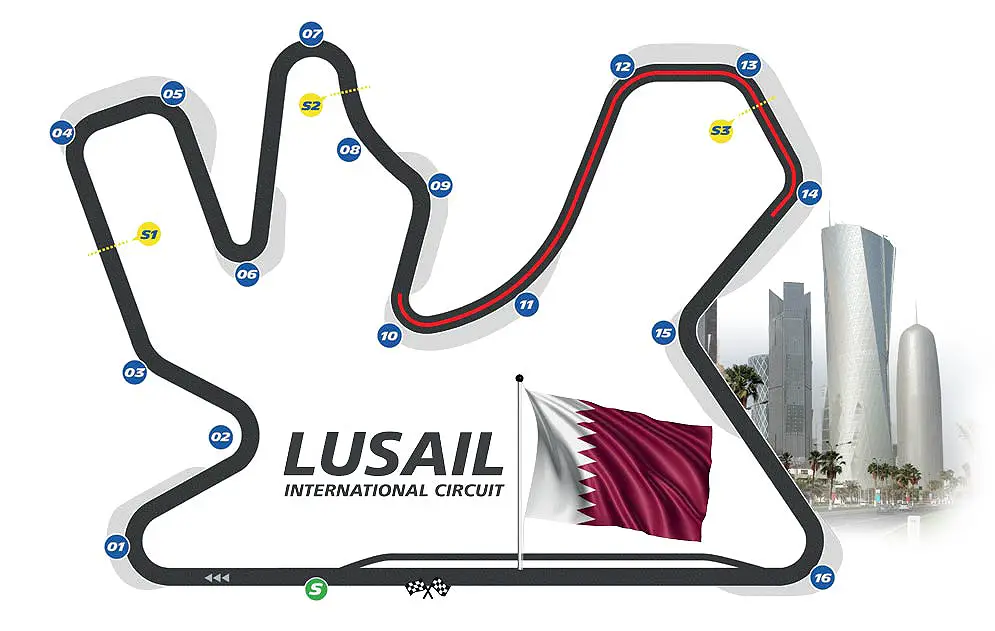The ethereal desert expanses of Qatar conceal a masterpiece of modern race engineering – the Lusail International Circuit which hosts the Qatar Grand Prix. Located just a stone’s throw away from Doha’s sparkling skyline, this track is a testament to motorsport’s ever-evolving dance between man, machine, and the environment.
As the roar of Formula 1 engines echo through the arid landscape, the Lusail circuit unfolds as a story of speed, precision, and audacious driving. The Lusail International Circuit in Qatar is a breathtaking track, weaving through the desert landscapes just north of Doha. Hosting the pinnacle of motorsport, it showcases the synergy of speed, precision, and driver prowess.
Join us as we delve deep into the labyrinthine turns and blistering straights of this desert gem, capturing the essence of an F1 drive through one of the sport’s newest and most intriguing destinations.
F1worldwide.com Recommends
- Qatar GP: Why You Should Visit This Amazing F1 Destination
- Yuki Tsunoda: The Japanese F1 Driver Making Waves
- Yuki Tsunoda as a Child
- Everything you need to know about Max Verstappen
- After Posting REVEALING Pictures Kelly Piquet SAVAGED
Qatar Grand Prix – Main Straight

Cars launch off the grid and reach speeds of up to 330 km/h (205 mph) down the main straight. The G-force on acceleration from a standing start is immense, pushing the driver back into their seat.
Qatar Grand Prix – Turn 1
Approaching Turn 1, drivers brake hard, experiencing a G-force of over 5G, shedding speed rapidly to around 120 km/h (75 mph) for this sharp right-hander.
The racing line is to approach from the far left, clipping the apex, and powering out wide.
Qatar Grand Prix – Turn 2
Leading into Turn 2, drivers swing the car to the right, preparing for this tight left-hander. Speeds drop to around 90 km/h (56 mph), with the G-force pulling them to the outside.
Qatar Grand Prix – Turns 3 & 4

A quick sequence of a right-left chicane, drivers need to maintain momentum.
The lateral G-forces subject the driver to around 4G. The typical speed through the corner is approximately 100-110 km/h (62-68 mph).
Qatar Grand Prix – Turn 5
A fast right-hander, drivers touch the apex while maintaining around 150 km/h (93 mph), with lateral G-forces pushing them to the left.
Qatar Grand Prix – Turns 6 to 9
This technical section demands precision. Speeds vary between 80-130 km/h (50-81 mph).
The rapid direction changes mean drivers experience alternating G-forces, demanding extreme neck and core strength.
Qatar Grand Prix – Turn 10
Turn 10 is a sweeping left-hander. Drivers manage to keep a speed of 140 km/h (87 mph) through it.
They take the outside line at the entry into the corner, cutting tight to the apex. They lett the car drift out, all while experiencing lateral 4-Gs.
Qatar GP – Back Straight
After turn 10, cars accelerate back up to around 320 km/h (199 mph), allowing a short respite before the upcoming sequence.
Qatar GP – Turns 11 & 12
Hard braking is needed to reduce the 320 km/h (199 mph) speed into the Turn 11 right-hander. Th speeds reduce to around 100 km/h (62 mph).
Turn 12, a fast left, is taken at about 150 km/h (93 mph), with drivers using all available track width.
Qatar GP – Turns 13 to 15
This is another intricate sequence, with alternating directions and a mix of speeds, drivers experience G-forces from all angles.
They meticulously dance between 90-130 km/h (56-81 mph).
Qatar GP – Turn 16

Turn 16 is the last on the circuit and is a long, sweeping right-hander, cars hold a line at around 170 km/h (105 mph).
The centrifugal force here can exceed 4G, pressing the driver to their left.
Qatar GP – Final Stretch
Emerging from Turn 16, drivers power down, reaching speeds upwards of 330 km/h (205 mph) again, preparing for another lap or the race to the checkered flag.
Throughout a lap at the Lusail International Circuit, a driver experiences a symphony of alternating G-forces, a testament to their athletic prowess and the engineering marvels they command. This track is not just a test of speed, but endurance, strategy, and raw talent.

